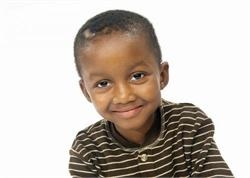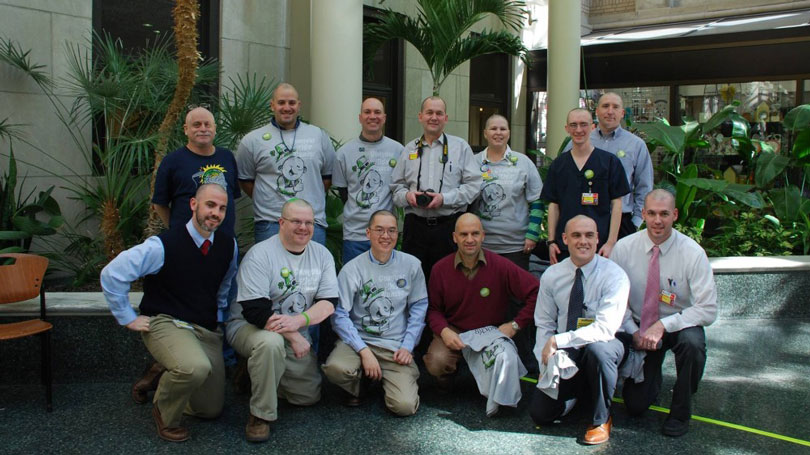Research Looking to Reverse Neuroblastoma Tumor-Promoting Environment

In the fight against metastatic neuroblastoma, there is a newly discovered cellular agent, a traitor, assisting in the growth of cancerous tumors. But St. Baldrick’s researcher, Dr. Shahab Asgharzadeh, is trying to set it straight.
Dr. Asgharzadeh has discovered the presence of immune cells called “macrophages” within cancerous pediatric tumors. In their normal role in the immune system, macrophages usually consume germs, but in metastatic neuroblastoma they are coerced by the cancer cells to support tumor growth instead. Children who are diagnosed with neuroblastoma after 18 months of age have a higher rate of these macrophages and also have higher risk for disease relapse.
These findings shed light on the importance of the ‘tumor microenvironment,’ the cancerous and non-cancerous cells such as blood vessels and immune cells that make up the tumor. As it is, the macrophages’ presence in this microenvironment promotes growth of cancer cells, but Asgharzadeh’s team is now looking at how they can use this information to look for new treatments that will reverse the tumor-promoting effects of the macrophages and use them to fight against the cancerous cells.
St. Baldrick’s Foundation Scientific Review Process
While shavees and volunteers are raising funds to be used for grants, researchers are making their way through a rigorous grant application process. The St. Baldrick’s Foundation had over 100 reviewers from the pediatric hematology and oncology community review grants in 2012.
Each application is reviewed by at least three pediatric hematology/oncology researchers, using the same rating system used by the National Cancer Institute. If all three reviewers give an application an excellent score, it’s recommended for funding. (A poor score from all three means it’s not recommended.) If the scores vary or are not decisive, the application goes to a larger committee of reviewers to discuss and vote on a final score.
St. Baldrick’s Grant Helps Find New Treatment for High-Risk Kids’ Cancer

Philadelphia chromosome-like acute lymphoblastic leukemia (Ph-like ALL) is a subgroup of the most common form of childhood cancer, with features including high relapse rate and poor survival. Ph-like ALL accounts for 15% of all childhood ALL. And now, for close to half of children diagnosed with this disease, the genetic variance that causes the cancer to grow has been identified!
St. Baldrick’s Foundation 2012 Summer Grants: Scholars

Because grant funds are scarce, it is difficult for those early in their careers to compete with more established researchers. St. Baldrick’s Scholar awards keep young researchers working on fresh ideas and prepare them for independent research careers. Scholars are funded for three years of research with guidance from an expert sponsor, and may apply for an additional two years. Applicants must have completed a pediatric oncology research fellowship or equivalent training and hold a faculty-level position at a qualified research institution. This year 15 new St. Baldrick’s Scholars were funded, and 8 were granted the additional two years of funding, for a total of more than $6.7 million.
Fighting Childhood Cancer with Leukemia Immunotherapy

By St. Baldrick’s Scholar Satiro de Oliveira, MD
During a long holiday weekend, five-year-old Abe was admitted to the hospital after persistent nose bleeds, fever, and the appearance of small red or purple spots throughout his body caused by a rupture in the blood vessels. Though worried, Abe’s parents didn’t expect to hear the results of their son’s tests: Abe was diagnosed with leukemia, a type of childhood cancer.
What Is High-Grade Glioma?

What is high-grade glioma?
High-grade gliomas are a diverse group of tumors of the brain and spinal cord that occur in children of all ages. This type of childhood cancer grows rapidly and has the ability to spread through brain tissue aggressively, making it very difficult to treat.
High-grade gliomas are classified by their location and by the appearance of the tumor under microscopic examination. This classification helps to assign a prognosis for the patient, but overall prognosis is poor for all types of high-grade gliomas.
Tell Me What I Need to Do to Cure Childhood Cancer
Dr. Chow is a St. Baldrick’s Scholar studying brain tumors in children. He shares his experience treating a patient with DIPG, one of the deadliest types of childhood cancer.

Joshua was diagnosed with DIPG when he was 4.
When I first met 4-year-old Joshua, he was beginning the toughest battle of his young life. What struck me immediately that day was the look in his eyes that was not one of fear, but one that said, “I’m ready for this. Tell me what I need to do.”
Making the Cancer Cells Go Away
Don Coulter wasn’t considering a career in childhood cancer research until a 12-year-old girl changed his mind. He went from her hospital room to the lab, where her doctor asked Coulter to look through the microscope, “These are the cancer cells that are killing this patient and we’re going to make them go away.”
From that moment, making the cancer cells go away, and saving children like her, became Coulter’s passion.
But, why is Don Coulter’s career important?
15 Months: An Unforgettable Experience with a Childhood Cancer Patient [VIDEO]

Some moments are unforgettable – like the moment Dr. Jason Yustein met Katie*, a nine-year-old child with cancer.
Katie’s family had piled into their family car to drive more than five hours from West Virginia to Baltimore, Maryland with Katie’s MRI results in hand and a recommendation from their pediatrician to get a second opinion at Johns Hopkins Children’s Hospital.
“As a fellow, you’re the first one to get called into the ER,” says Yustein. When he met Katie, he noticed her lack of coordination and balance and heard her complain of headaches. On her MRI, he saw a large brain tumor. “A particular percentage was inoperable, and therefore, fatal. There would be no cure for the patient,” he recalls.
Immunotherapy: The Future of Childhood Cancer Treatment
Dr. Alex Huang, a St. Baldrick’s Scholar, is studying immunotherapy as a safer treatment option for children with osteosarcoma and rhabdomyosarcoma. Read how he’s using his research — and his bald head — to help kids with cancer.

Dr. Alex Huang with Team Rainbow.
On March 9, I had my head shaved at the Rainbow Babies and Children’s Hospital in Cleveland, Ohio. (2012 Ambassador Austin also attended the head-shaving event.) This was my fourth year as a shavee℠ and member of my hospital’s team, Rainbow Babies & Children’s Hospital, where I am the Director of the Pediatric Hematology/Oncology Fellowship Training Program.
« Newer PostsOlder Posts »

 SBF
Tweets »
SBF
Tweets »